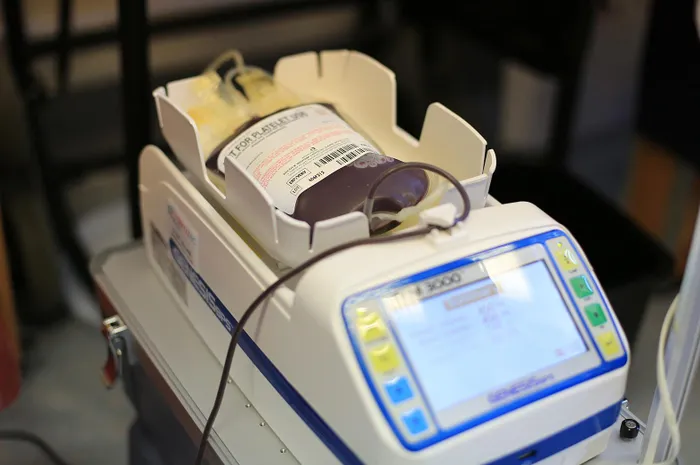Be a lifesaver: Stem cell donation is a simple, surgery-free process
DONORS NEEDED FROM BLACK COMMUNITIES

Many patients around South Africa are battling serious illnesses like blood cancer. If you register as a stem cell donor, you can be saving the life of someone in need.
Image: Danie van der Lith / DFA
DKMS is encouraging Black donors to join their registry. This is because increasing diversity in the donor pool improves the chances of finding a matching donor for patients from diverse backgrounds who need a blood stem cell transplant.
Donated stem cells are used to replace damaged or diseased cells in patients undergoing transplants, offering a potentially life-saving treatment for various blood-related conditions and diseases. This lifesaving process involves several steps to ensure your health and safety while providing a safe stem cell product to the patient.
DKMS will contact you to explain the process, answer any questions you may have, and connect you with previous donors who have undergone a similar experience. This step is designed to provide you with a clear understanding of what to expect and to address any concerns you may have.
The donation procedure
The donation procedure involves several steps to ensure the safe collection of blood stem cells. The process begins with a medical assessment to evaluate your suitability as a donor.
This assessment includes:
- Medical history: A review of your medical history to identify any potential health risks.
- Physical examination: A thorough physical examination to assess your overall health.
- Blood tests: Blood tests, including virological and bacteriological testing, to screen for infectious diseases.
- Ultrasound and ECG: An ultrasound of the abdomen and an ECG to assess your overall health.
- Chest x-ray: A chest X-ray to evaluate your lung function.
To ensure a successful donation, you'll need to:
- Administer G-CSF injections: Daily injections for four consecutive days before donation to stimulate stem cell production.
- Use reliable contraception: Female donors of childbearing age must use reliable contraception until the G-CSF course is finished and for at least one month after.
No surgery required
The PBSC procedure does not require surgery. It's typically performed on an outpatient basis, and most donors can go home the afternoon of the donation if it's a one-day procedure.
The PBSC procedure entails:
- Blood withdrawal: Your blood is withdrawn from a vein in your arm.
- Stem cell separation: The blood is passed through a machine that separates your blood stem cells.
- Return of remaining blood: The remaining blood components are returned to you through a vein in your other arm.
The donation process usually takes about four hours. Some donors may need to return for a second consecutive day if enough stem cells are not collected on the first day.
After the donation
You'll be monitored until physically stable and ready to go home. Regular follow-ups and check-ins are done to monitor your recovery.
Most donors can return to their usual activities within two days, but some may need up to two weeks to fully recover if their activities involve physical exertion.
DKMS will cover all process-related costs, including travel and accommodation expenses.
By donating your stem cells, you'll be giving a patient a second chance at life. Your health and safety are top priorities throughout the process.
Register at https://www.dkms-africa.org/register-now to become a donor.
* Deutsche Knochenmarkspenderdatei, abbreviated as DKMS, is an international nonprofit bone marrow donor center based in Tübingen, Germany, with entities in Chile, India, Poland, South Africa, the United Kingdom and the United States.
Related Topics: